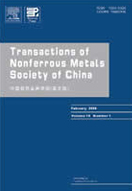Microstructure and ablation behavior of Zr-based ultra-high-temperature gradient composites
(1. State Key Laboratory of Powder Metallurgy, Central South University, Changsha 410083, China;
2. National Key Laboratory of Science and Technology on High-strength Structural Materials, Central South University, Changsha 410083, China)
2. National Key Laboratory of Science and Technology on High-strength Structural Materials, Central South University, Changsha 410083, China)
Abstract: To obtain high-performance Zr-based ultra-high-temperature composites, Zr-based ultra-high-temperature gradient composites were prepared by changing the laying method of the infiltrant via reactive melt infiltration. The effects of different infiltrant laying methods on the microstructure and ablative properties of Zr-based ultrahigh-temperature gradient composites were investigated. The results showed that the gradient structure of the Zr-based ultrahigh-temperature gradient composites differed when the composition ratio of the infiltrant was changed. When the thicknesses of the Zr/Mo/Si layers were 6/4/12 mm and 8/2/12 mm, the SiMoZrC solid solution content in the samples increased and decreased along the infiltration direction, respectively. The gradient samples were ablated in an oxyacetylene flame at 3000 °C for 40 s. The ablation resistance of the sample was the highest when the infiltrant was a powder and the thickness of the Zr/Mo/Si layer was 6/4/12 mm.
Key words: reactive melt infiltration; ceramic-matrix composites; gradient material; microstructure; ablation property

